Travel
Bringing Life to Cebu’s Heritage

At present, Cebu is an interesting study of contrasts. The rapid development of the city—especially in terms of the business process outsourcing and real estate industries—have led to it to becoming one of the most modern cities in the country, yet fascinatingly enough it remains embedded in its history and culture, the heritage of which has shaped its identity.

Magellan’s Cross (Photo by Snapholic/Originally published in Zee Lifestyle, June 2013)
“The concept of heritage is anything of value that we treasure because it holds meaning for us,” says heritage architect Melva Rodriguez-Java. “Because it holds meaning for us, we want to take care of it to transmit it to the next generation.”
While there have been notable continuous efforts to preserve Cebu’s rich heritage, it remains an ongoing struggle, especially with certain factors in play. Following the devastation in the aftermath of the natural disasters that struck last year, Java realized just how unprepared the country is in taking care of its heritage. “The government was unable to respond immediately and correctly to the damages brought by Yolanda and the earthquake,” she explains, citing the fragmentary restoration labors for the Fort San Pedro and the belfry of the Basilica Minore del Sto. Niño, the restoration of which she is currently involved in. She adds that in the case of the Sto. Niño, international experts came in and volunteered to teach them how it’s done.

Heritage architect Melva Rodriguez-Java working on site at the belfry of the Basilica Minore del Sto. Niño (Photo courtesy of Melva Java)
Beyond the shortcomings of the government, the rapid globalization, while having its positive repercussions, considerably affects the identities of the citizens. “Globalization is there. It’s a fact,” she states. “But we cannot just go on floating and being carried here and there. We need grounding, and that grounding is appreciating our roots. Part of being able to do that is awareness of heritage.”
Java acknowledges some people think heritage appreciation is an elitist thing only for the educated, yet shoots the misconception down, saying that it’s very grassroots. “Maybe it’s not innate in everybody,” she admits. “It has to be developed. It has to be learned. Like a taste for food, it has to be acquired.”
It starts with awareness of heritage, as awareness develops appreciation. “When you appreciate things, you begin to value them. You begin to protect and care for them. That’s what we want to happen with heritage,” Java says.
Thanks to the development of technology, efforts to be aware and appreciative are one notch more interesting. With museums and tours taking a more interactive approach, gone are the days of going around and visiting Cebu’s historical sites being boring.
“History must be taught in a fun way. That’s how you get people’s attention,” Ka Bino Guerrero shares in a profile written about him for Zee Lifestyle’s June 2013 Arts & Culture issue. Ka Bino started the Old Cebu Walks, which takes people from Magellan’s Cross through nearby churches before ending up at the ancestral homes in Parian. He interjects his personality into his tours, along with interesting anecdotes that may not be in history books.
Max and Marlen Limpag, who were featured on Zee Lifestyle’s July 2014 Men’s & Technology issue, began a digital tourism campaign through their startup company InnoPub Media. One of their projects is data-tagging tourism and heritage sites with QR codes. When people scan these codes using their mobile gadgets, they are provided with little tour guides right in their hands.
“Heritage work is hard work,” Ka Bino says, admitting that the benefits are more like just a pat on the back. “More than the monetary aspect, there is the respect. It’s very rewarding. There’s no recognition, but it’s more like having the satisfaction of being a part of something bigger.”
Historical and heritage sites may mostly be tourist attractions, and with good reason: they paint a cultural picture and offer something we have that they don’t. Yet more than anything, these places are a story of humanity—a story about us. “We understand ourselves better when we know where we come from,” Java concludes. The refreshing and innovative approaches to heritage breathe new life and renew our pride in it.
In June 2013, Ka Bino invited Zee Lifestyle to join him on one of his Old Cebu Walks. Here’s a sneak peek into his itinerary.
MAGELLAN’S CROSS
Planted by Ferdinand Magellan’s men upon arriving in Cebu in April 21, 1521, the Magellan’s Cross is the symbol of the Cebuano’s acceptance of the Christian faith—although Ka Bino explains there might be more shrewd reasoning behind Rajah Humabon’s acceptance of the foreigners. “He saw it as a business opportunity to be able to trade with more places,” he says, explaining that before the Spanish arrived in Cebu, it was already a community that traded with various other Asian countries.

Ka Bino Guerrero at the Magellan’s Cross (Photo by Snapholic/Originally published in Zee Lifestyle, June 2013)
As various vendors approach with candles and an offering to say prayers, Ka Bino explains the practice that he usually encourages his guests to take. “I tell them to buy the candles, let the ladies say their prayers, then bring the candles home instead of leaving them here,” he says. “You can no longer light candles inside this monument because it’s a fire hazard, so you might as well bring them along and light them when you are badly in need of spiritual guidance.”
BASILICA MINORE DEL STO. NIÑO
Built in 1725, the Sto. Niño Church is probably Cebu’s most iconic for being the center of the popular Sinulog Festival. “When it was built, they didn’t have cement so they would use egg whites,” Ka Bino explains. “So if you wanted to get married or have your baptism in the church, you would have to donate a hen. The hen lays the eggs, and the egg whites are used to build the church. That’s why we have a lot of delicacies that use just the egg yolks.”

Basilica Minore del Sto Nino (Photo by Snapholic/Originally published in Zee Lifestyle, June 2013)
Approaching the façade of the church, Ka Bino points out the cement statues by the entrance. “The church itself is very Hispanic, but what’s this thing over here? It’s a Chinese foo dog. That’s how crazy we are when it comes to decorating, we just put everything in it.” The large doors themselves are carved with images of saints, including St. Peter. “In the early days, we were made to believe that you could only get to salvation through the church. That’s why church doors are so ornately done—they represent the gates of heaven.”
STREET VENDORS
“It’s Filipino tradition that after attending mass, you have to buy flowers to offer to your altar at home,” Ka Bino explains while walking through the alley across the church, filled with baskets of fresh and colorful flowers brought in from Cebu’s upland barangays.
Right next to one vendor is a food cart, filled to the brim with familiar local treats, like rosquillos, pinasgbo, masareal, tagaktak and chicharon. “Flowers for God, and food for the children,” he says. “Food is part of our heritage. Sometimes we take it for granted, but it’s another way of learning about our culture.”

Ka Bino Guerrero at a flower stall in downtown Cebu (Photo by Snapholic/Originally published in Zee Lifestyle, June 2013)
CEBU METROPOLITAN CATHEDRAL
“It’s time for the sad stories,” says Ka Bino as we enter the Cathedral’s compound. Besides the bomb that fell on the church during World War II and destroyed a substantial part of the structure, another sad story lay in the image that stands in the courtyard. “Miguel Lopez de Legaspi arrived in Cebu, it was the feast day of San Vidal, who was the patron saint of Cebu for the longest time. Every feast day, the image of the Sto. Niño would be brought to the Cathedral. But Pope Innocent ordered that all feasts of the child Jesus should be moved to January, so the feast of the Sto. Niño got moved and this guy was relegated to the courtyard. Today, if you ask a regular Cebuano about San Vidal, they will tell you he’s not a saint but the former bishop of Cebu.”
The Spanish king’s coat of arms is carved above the entrance of the church, commemorating the fact that the King of Spain had financed its construction. “Once upon a time, this was the seat of the biggest diocese in the Philippine ecclesiastical map,” Ka Bino says. “Guam was a part of the diocese, which is why we sent Pedro Calungsod there. Dumaguete, Tagbilaran, Leyte—they are just daughter dioceses that were once part of Cebu’s.”

Cebu Metropolitan Cathedral (Photo by Snapholic/Originally published in Zee Lifestyle, June 2013)
THE RAJAH HUMABON MONUMENT
Sitting on a monument in the middle of a fork in the road, the image of Rajah Humabon sits proudly on his pedestal. “He is the king of Cebu and he is pintados,” Ka Bino introduces, pointing out the tattoos that cover almost all surfaces of his body. “In the early days, tattoos were medals of valor. It’s a merit. You can’t just get a tattoo because you want it; you have to earn it. The first battle you win can earn you a tattoo on your feet. Humabon has tattoos on his face, so you can imagine just how powerful he must have been.”
With several tidbits on daily life back then, Ka Bino gives a fitting explanation about why Cebuanos often find themselves in need of a nightcap. “In the early days, Cebuanos could drink like there was no tomorrow. Drinking and eating were like one activity,” he explains. “In town hall meetings, drinking was always welcome because when they get tipsy, the discussion becomes more animated.” Sounds like a great party to us.

The Rajah Humabon Monument (Photo by Snapholic/Originally published in Zee Lifestyle, June 2013)
JESUIT HOUSE
A colonial house in Cebu that dates back to 1730, the Jesuit House sits inside the Hotong Hardware bodega, a juxtaposition that Ka Bino finds interesting for tours. “I love the faces of my guests when they enter. They’re always like ‘why is my guide bringing me into a warehouse?’” The winding hallways of the bodega chronicle the history of Chinese presence in the Philippines and Cebu, which is in homage to its original occupants, the Jesuit priests. “The Jesuits were actually assigned to Christianize China, and the Philippines was a jumping point. They were assigned to the Chinese communities here as part of their training.”
The house is the only one in Cebu that is bahay na bato from floor to ceiling, and has an erratic history that’s included religious groups, old Cebuano families, and even a stint as Club X back when Serging Osmeña rented out the house for his exclusive gentlemen’s club.

A display at the Jesuit House (Photo courtesy of PR Works/Originally published in Zee Lifestyle, June 2013)
YAP-SANDIEGO HOUSE
“It’s an old house, but most of the furniture had to be brought in,” Ka Bino explains. “It belonged to the ancestors of Val Sandiego, but he’d only gotten a portion because it was shared with the other members of the family. When his house in Capitol burned down, one of his relatives offered to give him their share and he slowly started getting everyone’s shares of the house. He even bought some of them out, then he had it restored.”
It’s an individual effort that’s very admirable, considering that restoring the house completely would take at least P15 million. The cost is staggering, which makes Ka Bino hope for some help from the government regarding preservation matters. “The government should encourage or give incentives to people doing this,” he says.

The Yap-Sandiego Ancestral House (Photo courtesy of PR Works/Originally published in Zee Lifestyle, June 2013)
“It’s a collective memory. Heritage isn’t owned by some—it belongs to the people.”
– Ka Bino Guerrero
THE CEBU HERITAGE MONUMENT
“If you just had one hour in Cebu and want to see something historical, you should visit the Cebu Heritage Monument,” says Ka Bino. “It’s a city tour in one stop—the Magellan’s cross, the churches, the historical battles.” Sculpted by local artist Eduardo Castrillo, with the help of the late senator Marcelo Fernan, the monument was finished in 2000 and depicts several places and scenes that are integral to Cebu’s history. These include the Basilica del Sto. Niño, a Spanish galleon, the battle of Mactan between Lapu-Lapu and Magellan, the late president Sergio Osmeña Sr., and the recently canonized Pedro Calungsod.

The Cebu Heritage Monument (Photo by Snapholic/Originally published in Zee Lifestyle, June 2013)
by Patty Taboada
This story is an addendum to ‘Memory Lane’ written by Shari Quimbo, originally published on Zee Lifestyle’s June 2013 issue.
Travel
Autumn in Istanbul: Fellow Travellers Share Turkish Delights

by Jing Ramos
Istanbul is a transcontinental city positioned between Europe and Asia, known for its rich history and upbeat modern identity. The city features a unique blend of Byzantine and Ottoman architecture and has a bustling metropolitan life straddled along the Bosphorus Strait. Like Rome, it’s an old city built on seven hills. In fact, Istanbul’s gradient characteristic originates from the Roman Empire. The cobblestone streets of Istanbul were crafted by Albanian craftsmen commissioned by Sultan Abdulmecit in the 19th century, giving the city an old-world charm.

The lobby of the Pera Palace Hotel exudes old world charm.
Stephen Aznar, who organized this brief interlude in Istanbul, couldn’t have chosen a more interesting address—after all, location is paramount. We were right in the heart of Beyoglu, a historic and vibrant neighbourhood on the European side of Istanbul. Cultural landmarks such as the Galata Tower, historical buildings, art galleries, numerous churches, and an engaging atmosphere of fascinating restaurants and cafés surrounded us. Not far from our apartment stood the iconic Pera Palace Hotel, built in 1895 for passengers of the Orient Express. Designed by French-Ottoman architect Alexander Vallaury, the hotel’s opulent architecture is a hybrid of neo-classical, art nouveau, and oriental styles. Famous names have graced the hotel’s registry, including Mustafa Kemal Atatürk, founder of the Republic of Turkey, and writer Agatha Christie, who reportedly drew inspiration from the hotel for her novel Murder on the Orient Express. Other notable visitors included Ernest Hemingway, Alfred Hitchcock, and Queen Elizabeth II.

Stephen Aznar by the Galata Tower in Beyoglu.

The interiors of the patisserie were given a facelift by renowned interior designer Anouska Hempel.

The china served in the cafe were naturally pink, a favorite color of the Atataturks.
Stepping into the patisserie of the Pera Palace Hotel is a journey into the Belle Époque—a dreamlike era when the art nouveau period flourished. This French-style bakery features a predominantly pink ambiance with cranberry tones, moiré silks, and velvet cushions. Interior designer Anouska Hempel refreshed the café’s interiors in 2013, enhancing its original design, and the result is “the glamour of a bygone era.” Dessert history spanning Istanbul to Anatolia includes a varied range of baklavas, rice pudding, and Turkish delights from the Ottoman Palace, as well as patisserie products, biscuits, tarts, and cakes that made their way to Pera in the mid–19th century. That particular afternoon, our guilty pleasure consisted of Turkish tea with a traditional caramel éclair and a lotus tart served on pink china—a favourite color of the Atatürks.

Tracey Emin’s Bazen/Sometimes, inkjet mounted on foam board 2009
The Elgiz Museum of Contemporary Art, located in Istanbul’s business district within the Beybi Giz Plaza building, is Turkey’s first contemporary art museum established to support the development of contemporary art. The museum is nonprofit, founded by Sevda and Can Elgiz, and houses the family’s private collection, showcases temporary exhibitions, and serves as a platform for young and emerging artists and curators.
Currently on exhibition is Season of Mirage, which explores the thin line between dream and reality through current works by Turkish artists and selections from the museum’s private collection. A journey through the layered world of art, the exhibition—named after a mirage—offers a visual feast shaped by artists’ observations of the modern world. The interplay between clarity and uncertainty provides viewers with an opportunity to transcend time and explore both past and present. And although the city of Istanbul remains deeply rooted in its glorious past, the present reveals a collective artistic voice expressing concern over societal challenges, vividly depicted in the images of Season of Mirage.

This writer, Jing Ramos soaking up the atmosphere at the Patisserie .
Lifestyle
Find Your Summer Spirit in Shangri-La Mactan, Cebu
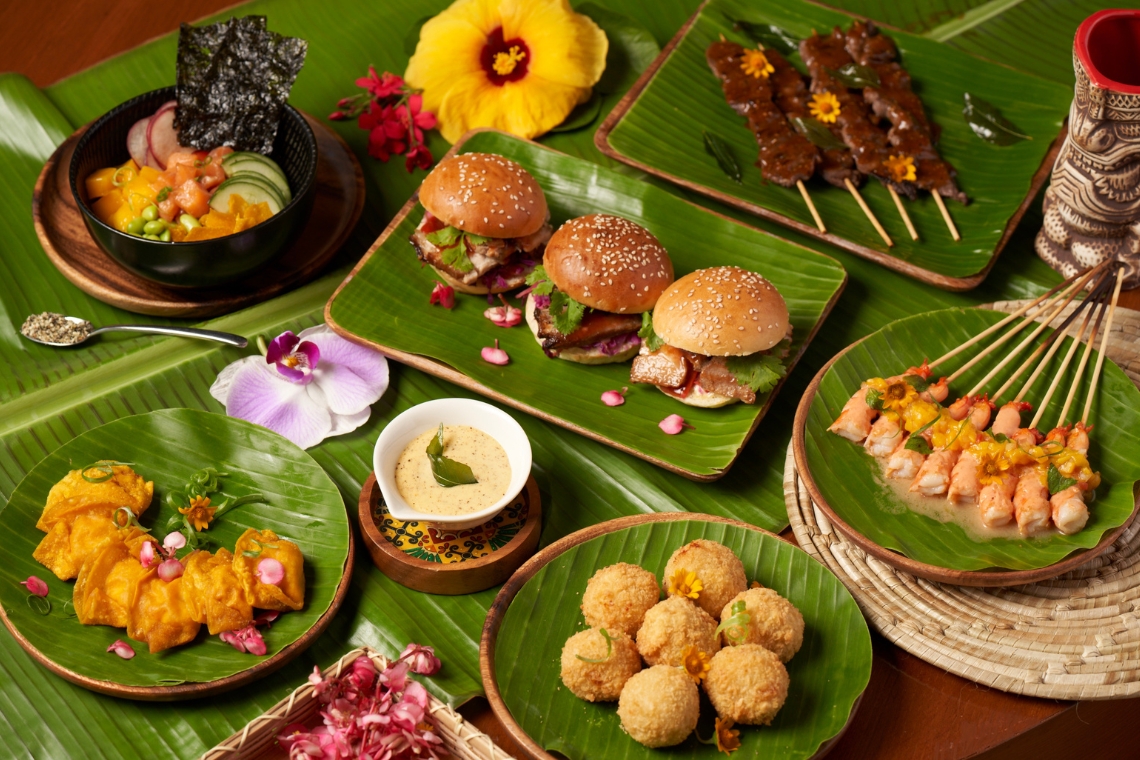
Breathe in the tropical atmosphere, as you find summer joys through sight, sound and taste at Shangri-La Mactan, Cebu. Poolside fun during the day, spent serenely and luxuriantly—a refreshment in hand. While the evenings are for outdoor family movie nights, with the ocean waves rippling in the background.
Summer is all of that, and more! Plan an extraordinary weekend with an array of exciting activities that await your arrival. Discover your #ShangriLaSummerSpirit from 15 July to 30 August.

Tiki Bar at Buko Bar
Epicurean Delights by the Pool
Keep yourself fueled up as you splish and splash with the whole crew. Take a quick break from all that summer jazz with Mediterranean and Polynesian-inspired bites exquisitely crafted for your palate. From rice balls and pastas, ice creams to sliders—indulge in tastes and aromas that transport you to a world of endless, golden summers.

Mediterranean Selections at Acqua
A Whimsical Touch
Make it a colourful summer for the kids! Let them explore their own version of paradise with whimsical floaties, sure to keep them happily afloat. Your little ones can now freely kick and play in the water with fun and fascinating, animal-shaped inflatables.
Pleasant Sundowner Tunes
Bid the sun adieu and embrace the sunset hues with live acoustics at the Main Pool from 4pm to 6:30pm.

Tiki Cocktails at Buko Bar

Champagne Bar at Acqua
A Toast to an Endless Summer!
Unwind and savour the tropical vibe as our expert mixologists craft refreshing Tiki cocktails and serve chilled bottles of exquisite champagne by the pool! With a backdrop of swaying palm trees and stunning ocean views, sip on delightful beverages and toast to unforgettable summer moments in paradise.
Family Outdoor Movie Night
Gather your nearest and dearest for an enchanting evening as we set up a large outdoor screen by the pool under the starry night sky. Cozy up as you enjoy a family-friendly movie that will delight both those who are young and young-at-heart at Treasure Island from 7pm to 9pm.

Surrounded by lush greens, let the experience bring you to a world of joy and laughter, creating cherished memories for you and the family. For more information on Shangri-La Mactan, Cebu, you may contact (032) 2310288. You may also follow them on Facebook and Instagram or visit https://www.shangri-la.com/cebu/mactanresort/ #FindYourSummerSpirit #FindYourShangriLa
inside
LONDON IN FULL BLOOM: An Exclusive Look at the recent Chelsea Flower Show

The Chelsea Flower Show in London, one of the most prestigious horticultural events in the world, returned in full glory in May 2023, captivating visitors with its stunning displays and landscape designs. Held annually on the grounds of the Royal Hospital Chelsea in London, this year’s show proved to be a true feast for the senses, showcasing an array of breathtaking gardens, vibrant floral arrangements, and innovative landscaping. The 3-day event showcased 36 outdoor gardens, including four balcony gardens for small spaces. Inside the giant pavilion, blooms compete with each other, exotic flowers, roses, and many more.

Princess Kate Middleton walking the booths at the Chelsea Flower Show.

Dame Judy Dench, who owns several of Webb’s pieces in her garden, with James Doran-Webb and Jerry Sibal discussing the works of James.

One of the flower arrangements competing at the show.
The 2023 Chelsea Flower Show embraced a Nature’s Harmony theme, with a strong focus on sustainability and mental health. The show’s organizers emphasized the importance of sustainable gardening practices and biodiversity conservation, inspiring attendees to create beautiful outdoor spaces while preserving and protecting the environment.

One of the floral gazebo displays recycled chairs and salvaged materials.

Shops at the Chelsea Flower Show are mostly from sustainable materials.

What’s Cebu got to do with the Chelsea Flower Show in London? One person. James Doran Webb (https://www.jamesdoranwebb.co.uk), an Englishman working with driftwood, has been displaying his artworks for several years. James collects cast-off driftwood and shapes them into beautiful animal shapes that find places in some of the most iconic gardens. Leaping horses, owls, reindeer, and the occasional dragon, James Webb’s creations are avidly collected by landscapers to add accent to gardens in all sizes, using cast-off wood, fitting perfectly with the sustainable element—something Mr. Webb has done quite well for the last decade.

The impressive dragon of James Doran-Webb
***
The Philippine International Flower Festival will be held at the PICC in Manila from January 14 to 18, 2024. Watch out for more info from our website!
-

 Style2 months ago
Style2 months agoHappy Melendres Traipsing Around Manhattan in Non-Stop Armani
-
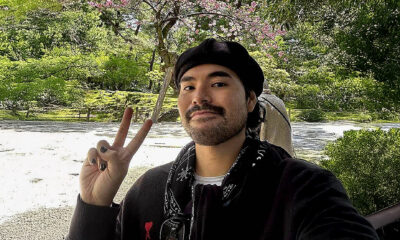
 Prime Target2 months ago
Prime Target2 months agoMiko Sarmiento: Turning Silk Scarves Into Works of Art
-

 Arts & Culture1 month ago
Arts & Culture1 month agoVisayas Art Fair Year 5: Infinite Perspectives, Unbound Creativity
-
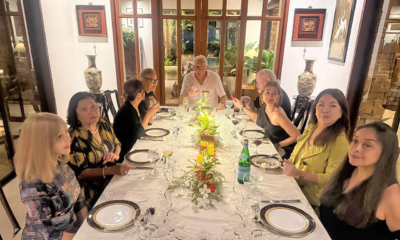
 The Scene3 months ago
The Scene3 months agoAnother Elegant Dinner at Chez Marguerite
-

 Prime Target3 months ago
Prime Target3 months agoLuna Vdl–Endless Summers in Siargao
-

 QuickFx3 months ago
QuickFx3 months agoI Lost It at the Movies: Five of the Most Significant Films of the 1960s
-

 Travel1 month ago
Travel1 month agoAutumn in Istanbul: Fellow Travellers Share Turkish Delights
-

 The Scene4 weeks ago
The Scene4 weeks agoBe Fabulous: Dr. Fremont Base’s 50th Birthday Party Echoes the Disco-Glam Era






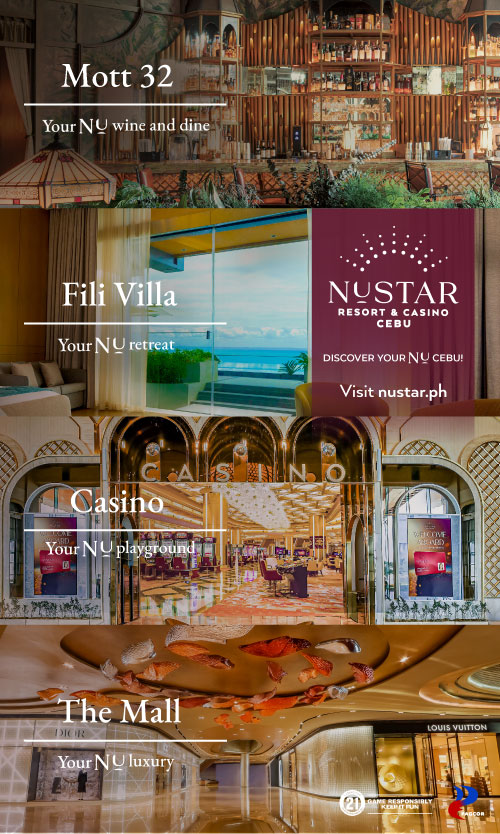

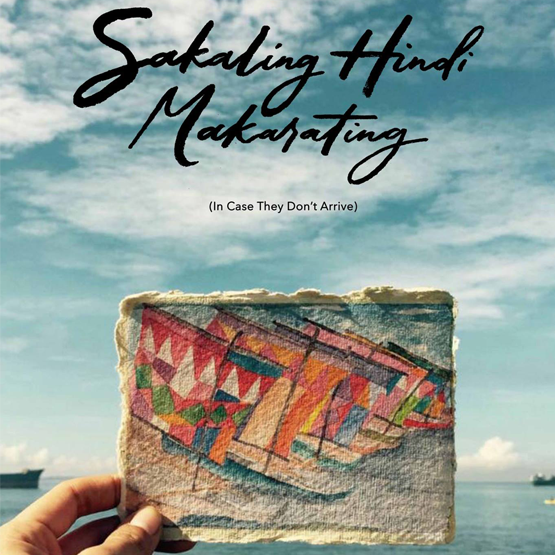




You must be logged in to post a comment Login